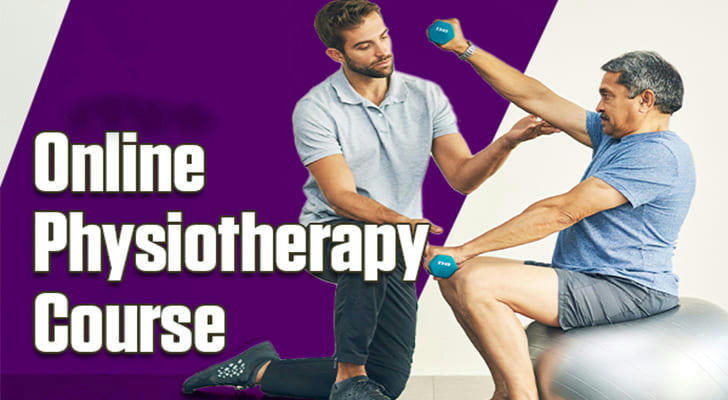Start a high-paying life through physical therapy courses
Are you passionate about sports and health? Do you dream of joining the medical team of the Lakers or Warriors and providing professional rehabilitation treatment for superstars? The physical therapy industry is opening a door for you - even if you don't have a medical background, you can quickly enter this high-demand, high-salary field through professional training courses. This article will recommend four types of courses to help you enter this golden track with a lower threshold.

Physical therapy assistants (PTAs) are one of the fastest growing professions in the medical industry. The U.S. Bureau of Labor Statistics predicts that by 2032, the demand for this position will increase by 26%, far exceeding the industry average. More importantly, the median annual salary of practitioners can reach $62,000, and the annual salary of PTAs working in professional sports teams or high-end clinics can even exceed $80,000.
1.Professional certification course:APTA physical therapy assistant program
Course highlights
The PTA program certified by the American Physical Therapy Association (APTA) is the gold standard recognized by the entire industry. This type of program is usually a two-year associate degree and includes:
- 750 hours of clinical practice: real-life experience in partner hospitals or clinics.
- Interdisciplinary knowledge: covering anatomy, neuroscience, rehabilitation technology, and medical ethics.
- Licensure exam preparation: 89% of graduates pass the National Licensure Exam (NPTE) on their first try.
Application process:
1.Visit the APTA official website course catalog (application link at the end of the article)
2.Select a CAPTE certification program
3.Submit high school transcripts and recommendation letters
4.Pass an admission interview
2.Practice-oriented apprenticeship program: Others pay tuition fees, you earn money
Recommended projects
Best Trade Schools partner institutions (such as Pennsylvania College of Technology, Tidewater Community College) provide "study-work integration" projects:
- Paid internship: students study on campus 3 days a week and work in partner clinics 2 days a week, with an hourly wage of 18-22 US dollars
- Special skills certification: additional orthopedic rehabilitation or sports medicine certificates can be obtained
- Employment guarantee: The employment rate of graduates from participating institutions is 94% within 6 months
Course advantages
- No loan required: Income during the apprenticeship period can cover 70% of tuition fees
- Network accumulation: Directly receive Contact top employers such as Warriors' cooperative clinics
3.Flexible and efficient online courses:millions of courses that can be learned on the subway
Physiotutors online platform
Suitable for people who already have a job but want to change careers:
On-demand learning: 200+ hours of video courses, covering practical skills such as kinesiology taping and dynamic stretching techniques.
Professional certification: Complete the "Advanced Orthopedic Rehabilitation" course to obtain certification from the International Federation of Physical Therapy (WCPT).
Low cost: Save 80% of the cost compared to traditional degrees.
4.Government-cooperated low-cost courses
Veterans Program: Through the "Department of Veterans Affairs Education Benefits", you can apply for reimbursement of PTA course tuition
Workforce Innovation Grant: Residents of 30 states can apply for WIOA funding, covering up to $12,000 in training fees
Community College Subsidy: For example, at Florida State College Jacksonville, the annual tuition for PTA courses is only $4,800
Why choose physical therapy?
1.Demand explosion
- Professional athletes’ rehabilitation expenses increase by 15% annually
- The demand for PTA services for people over 65 will double by 2030.
2.Career flexibility
- Optional work scenarios include:
Professional sports teams (average annual salary of $78,000)
High-end rehabilitation clinics (hourly wage of $35-45)
Home care (self-employed hourly wage can reach $60)
3.Technology empowerment - Learn cutting-edge technologies such as VR rehabilitation training and wearable device data analysis to become a "future therapist"
Rational entry guide
1. Evaluate the budget: Compare government subsidies, online courses and traditional degree costs
2. Lock in the direction: Sports rehabilitation? Elderly care? Choose a niche area
3. Apply for a trial class: Most colleges and universities offer trial classes
4. Build connections: Join the APTA student chapter and attend industry summits
When the Lakers' James completed a dunk on the court, the physical therapy team was behind him to take care of his knees; when Curry's three-pointers poured down, he could not do without the rehabilitation therapist's intensive training of his ankles. Now is the best time to enter this industry through professional courses - high salary, sense of achievement and social value are all in your hands. Don't let your dream stay in the audience, click on the course link now and start your career as a physical therapist!
